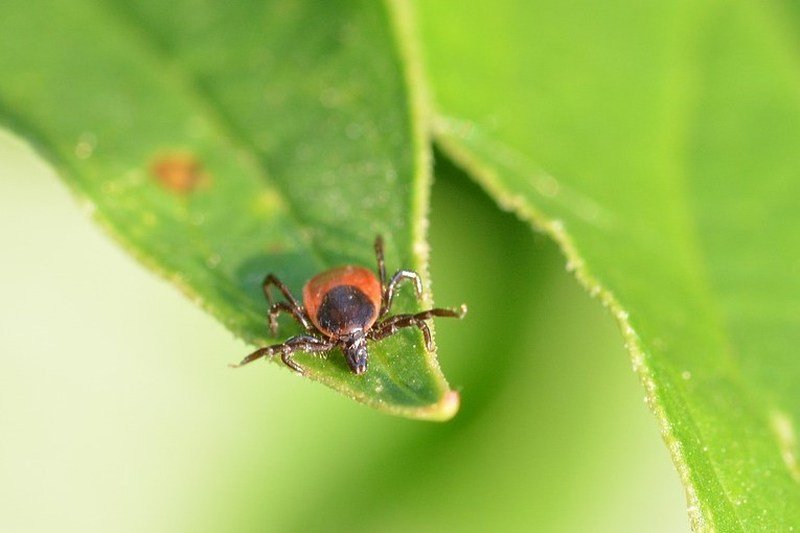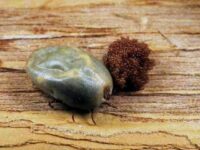Although ticks tend to prefer moist habitats such as the vegetation near water, the undergrowth in the woods or at the edge of the forest, and meadows with tall grass, unfortunately, they are also found in increasing numbers in our gardens.
How Do Ticks Get Into My Yard?
Ticks can crawl around, even very slowly, but this also leads to their spreading over time. Ticks mainly spread by hitching a ride on a host, they don’t care whether it is a wild or a domestic animal.
The most responsible for spreading ticks are birds, deer, mice, rats, rabbits, squirrels, foxes, martens, possums or even raccoons. And as all these animals are increasingly entering urbanized areas, they bring along with them unwanted garden guests. But not to forget our pet dogs and cats that roam the outdoors, they pick up ticks and spread them too.
Unfortunately, mice and many rodents may host pathogens, such as Lyme disease, Tularemia, Rocky Mountain spotted fever, Ehrlichiosis, and many others. By biting and sucking the blood of an infected host, the ticks also become infected with the pathogens, and when biting a human next pass the illness on.

How To Check My Yard For Ticks
You may have picked up a tick already in your garden, or maybe your pet has, in fact, most ticks are picked up in urban areas and our immediate surroundings. If you suspect ticks in your yard, you can do a simple test to check whether the nasty bloodsuckers are on your property. The method is called Tick Dragging, researchers use the same method to collect and study tick populations in the wild.
Simply get a white cloth or sheet and slowly pull it through your yard and over vegetation and hiding places where you suspect ticks may be hiding. The little creatures will cling to the cloth. Examine the black or brown spots on the fabric with the help of a magnifying glass. Ticks can be identified as arachnids on their eight legs.
Where do ticks hide?
Ticks feel particularly comfortable in shady, humid surroundings amongst grasses and shrubbery. Dense ground cover and undergrowth near walls and fences are areas where mice and rodents travel. Such places can turn into tick hotspots. Other places where ticks lurk may be:
- between piles of wood
- between and along stone walls
- along fences and walls
- near garden huts and tool sheds
- around bird feeding places, or around chicken coops
- compost heap and garden waste
- tall grass, dense flower beds, and perennial gardens
What can you do against ticks in the garden?
It is really hard to drive ticks completely out of your garden, but you can reduce their number significantly, by depriving them of their hiding places. Ticks love moist and warm places that offer them good protection against excessive heat in summer and a safe place to spend the cold winter months. To reduce tick populations in your garden clean up or remove all those places and make it as unfriendly as possible.

How to Get Rid Of Ticks In Your Yard
In addition to some enemies such as fungi, roundworms, small wasps, and various bird species, ticks have another big enemy: a clean, dry environment without hiding places.
- Keep your garden clean and allow the sunlight to reach the ground.
- Regularly trim tall grass, weeds, and shrubbery
- Prune perennials and trees two to three times a year.
- The growth in the shade under trees also offers great hiding for ticks. Regularly thin out vegetation under the tree
- Rake up the leaves and put them in the compost. Large piles of leaves on the ground provide a moist environment and pleasant conditions for ticks.
- Remove excessive moss from your lawn, and use a scarifier to make the lawn more airy and uncomfortable for ticks.
- Limit plant growth. Prune perennials and trees regularly remove dead, rotting, and overgrown vegetation.
- Avoid overgrowing grass and remove climbing plants and other overgrown bushy plants.
- Mow the lawn regularly. By keeping the lawn low, sunlight reaches the ground and there is less moisture and shade. Short grass also deprives ticks of the ability to crawl up and wait for a host.
- Keep the area around birdbaths and bird feeds clean and keep the vegetation low.
- Store your firewood neatly stacked and in a dry place. Piles of wood can provide ideal dark and moist hidings. A dry stack of wood is uncomfortable for ticks and makes your firewood is dry and doesn’t rot.
Cultivate plants that have tick-repelling properties
Plants are food for many insects. To fend off nibbling insects many plants produce chemicals and essential oils.
Many of these essential oils work effectively as natural pesticides or repellents and keep insects, mites, and arachnids away.
What Kills Ticks In The Yard
Using commercial insecticides will kill not only ticks but also all beneficial insects. Insecticides should be used with care and only applied locally in tick-infested areas. You can use the following natural methods to get rid of ticks in the yard and garden.
Protect Your Yard with Tick Tubes
Tick tubes are an eco-friendly and effective way to reduce the tick population in your yard. These small, easy-to-use devices contain a special material that targets ticks during their larval and nymph stages. When placed in your yard, tick tubes attract rodents like mice, which then carry the treated material back to their nests, where ticks are present.
The active ingredients in tick tubes are safe for humans, pets, and wildlife. They specifically target ticks and disrupt their life cycle, reducing the risk of tick-borne diseases such as Lyme disease. By using tick tubes, you’re not only protecting your yard but also contributing to a healthier environment.
Spray Your Yard With Beneficial Nematodes
Nematodes are tiny worms that are almost invisible to the naked eye. They occur naturally in soil throughout the world. They are either free-living or parasitic, which means they need a host to feed on. Each species of nematode specifically affects one particular or a small group of similar hosts.
The Beneficial nematodes that are used in gardening are harmless to humans or animals and do not harm aquatic life, birds, reptiles, or amphibians either.
Apply Diatomaceous Earth to Tick-prone Areas
Diatomaceous earth also called Diatomite, consists of the powdered fossil shells of extinct algae (diatoms). The consistency is powdery, the colors range from pure white to gray-brown.
Diatomaceous earth has the ability and power to kill all bugs: razor-sharp edges, invisible to our eyes, tear open the protective “chitin shell” of creeping insects fleas, and ticks. Pests are literally dried out.
Diatomite has no side effects for humans and animals.
Home Tick Spray For Yard And Garden
A tick spray for the yard and garden that is made from naturally occurring substances will be less harmful to the environment. If you fear unwanted side effects to your family and your pets, it may be safer to use around the house. The following recipe is based on natural ingredients to fight the pests without toxins:
- Boil a quart of water in a pot
- Slice some lemons, put them into the pot
- Add peppermint leaves, sage, basil or garlic
- Let it boil for an hour
- You may add a few drops of essential oils such as geranium or lavender oil to enhance the effect
- Let it cool down
- Fill into a pressure sprayer
- Spray all dark, damp, places where ticks may hide regularly

Personal Tick Protection When Outdoors
There is no 100% protection against tick bites, just as there is none against mosquito bites or catching the flu. However, you can reduce the risk by a few protective measures. The risk of a tick bite can be minimized with just a few rules of precaution:
Avoid their hiding places: Ticks lurk in tall grass, shrubs, and undergrowth. If you don’t have to foray through tall grass and undergrowth, stay away from it.
Wear the right clothing: Ticks can only bite directly into the skin, they cannot bite through clothing. Long-sleeved clothes also offer effective tick protection. Wear closed shoes and long trousers, put your pants leg in your socks. Light clothing makes it easier to spot the crawling animals.
Use tick protection: Using good repellants that contain DEET or Picaridin provides effective protection against ticks for a couple of hours. Before using such synthetic repellents, read the instructions and use them as recommended.
Natural insect repellents that contain essential oils can also provide protection, but they are not as effective as the known synthetic repellents. Certain factors such as high temperatures, wind, or excessive sweating, may reduce the effectiveness of topical tick protection.
Have a tick removal tool ready: You should remove a tick as soon as you notice that you have been bitten by one. The faster you remove a tick, the lower the risk that it will transmit an illness.
After being outdoors in nature, you should check your clothes and body thoroughly for ticks. Ticks may bite everywhere but prefer sites where the skin is thin and soft. Check under the armpits, in the neck area, in the back of the knees, and in the groin area.



